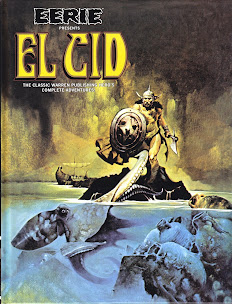Book Review: 'Nothing's Bad Luck: The Lives of Warren Zevon' by C. M. Kushins
4 / 5 Stars
'Nothing's Bad Luck: The Lives of Warren Zevon' (406 pp.) was published by Da Capo in May, 2019. It was the first published book for author Kushins, who in 2021 published a biography of Led Zeppelin drummer John Bonham, titled 'Beast: John Bonham and the Rise of Led Zeppelin'.
If you're a Baby Boomer, then the music of Warren Zevon likely is part and parcel of your memories of the 70s and 80s. I was in my senior year of high school when 'Werewolves of London' began heavy rotation on FM radio, and I later procured Excitable Boy, which remains one of the best rock albums of the 1970s. Zevon's followup albums, Bad Luck Streak in Dancing School and The Envoy, never achieved the chart and commercial success of Excitable but contained their share of worthwhile tracks.
Zevon positioned himself as a more eccentric member of the 'California' genre of rock that included the Eagles, Linda Ronstadt, J. D. Souther, and Jackson Browne, among others. Zevon was as likely to sing about mercenaries, psycho killers, and werewolves, as he was to sing about failed love affairs and heartbreak.
'Nothing's Bad Luck' covers Zevon's life and times from his birth on January 24, 1947 in Illinois; his childhood and adolescence in Fresno; and his initial forays into the music business. I was not aware that in 1966, Zevon joined White Whale records, the label best-known for having The Turtles on its roster. Performing with his girlfriend at the time, Violet Santangelo, as the folk rock duo 'lyme and cybelle', Zevon had a minor hit with the single 'Follow Me'.

Zevon spent the next ten years as yet another of the struggling musicians wandering L.A., making connections and bouncing from one never-realized project to the next, in the hopes of getting a recording contract with a major label. Zevon's 1976 album, titled Warren Zevon, attracted critical praise but didn't have much of a commercial impact. But Excitable Boy, recorded late in 1977 with the participation of the stars of the California rock world, was a major success following its release in January 1978, and made Zevon a rock star.
'Nothing's Bad Luck' is at its best in chronicling the interval from 1978 to 1989, when Zevon saw his fortunes rise, then gradually fall. Like many singer-songwriters who prospered in the 70s, Zevon experienced difficulty in transitioning to the era of the music video and New Wave, and after the release of Sentimental Hygiene in 1987 and Transverse City in 1989, he was dropped by Virgin records. The period from 1990 to Zevon's death at age 56 was one of reduced expectations, for Zevon's album releases and his tours. In his later years he branched into composing soundtracks and making cameo appearances in television shows like Suddenly Susan, and remained a favorite guest on Letterman and other late-night programs.
The book's closing chapter describes the events following Zevon's diagnosis of lung cancer in August 2002, and center on his efforts to record a final album (The Wind, 2003). This chapter is poignant and imparts a redemptive quality to Zevon's last year of life.
 |
| review of 'Bad Luck Streak in Dancing School', Rolling Stone magazine, March 6, 1980, illustration by Robert Clarke |
'Nothing's Bad Luck' is not quite a hagiography, nor is it an unbiased and objective biography. Kushins makes clear that throughout his life Zevon could be unpleasant to those around him, particularly in his years of rock-n-roll excess when he overindulged in drugs and alcohol. Zevon could be cruel and vicious towards his wives and girlfriends:
Only a few nights after the studio altercation [between Zevon and] Wachtel, Browne received a frantic phone call from Crystal [Zevon's wife]. Warren was on a drunken rampage. In fear - and at her wit's end - she pleaded for Browne's help. He immediately sped to their home in Los Feliz and spent hours calming Warren down. He later recalled, "I went over to his house because a bannister had been ripped off the wall. It was late when I got there, one or two in the morning, and he had no memory of doing this." (p. 94)
Reading between the lines of Kushins' prose, it's clear that when Zevon dedicated himself to sobriety in 1986, he tempered his objectionable behaviors to some extent, but did not eliminate them. I finished the book with the conclusion that Zevon was one of those creative individuals whose actions regularly veered between the engaging and the intolerable, demanding considerable forbearance from those close to him in both personal and professional capacities.
Summing up, 'Nothing's Bad Luck' will be a recommended read for those interested not just in Zevon's music, but in the California sound of the 70s and 80s. The book also will direct the reader to some of Zevon's lesser known recordings, which certainly offer their rewards to those with a fondness for the singer-songwriter musicianship of past decades.








































































.jpg)


















